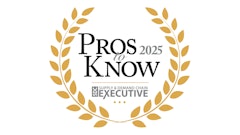
In the past few years, demand volatility has become a major focus area for supply chain managers at large process manufacturers. The economic uncertainty that followed the credit crisis in 2008 has led to unreliable purchasing patterns among consumers of finished goods, particularly in developed economies. This has had inevitable consequences on demand for raw materials further up the supply chain.
However, the post-crisis spike in volatility is really the latest development in a long-term global trend, in which the economic power of emerging markets has pulled manufacturing eastwards to Asia. The partial transfer of manufacturing plants to the Far East has been driven, in large part, by the need to better manage changing demand with shorter supply chains and reduced logistics costs for customers in those regions. Even as the growth trajectory in consumption centers like China slows down, new markets in the Association of Southeast Asian Nations (ASEAN) continue to emerge and drive an even faster pace of change.
While businesses have been experiencing significant shifts in demand patterns, the supply of feedstock and other key materials has become notoriously volatile in the same period. Volatile demand and volatile supply are intimately linked in a circular causal relationship. But geo-politics, globalization and depressed economic trajectories in developed markets have all contributed to the problem.
The traditional model of comparatively stable supply and demand, with tolerable amounts of unpredictability, has been overturned with greater variability on both sides of the supply chain. Securing profitability has become more challenging and addressing the lack of clarity in the demand picture is now more challenging than ever.
Demand Planning and the Bottom Line
In this climate, constructing a feasible, constrained and profitable demand plan is essential. Without accurate demand forecasting, manufacturers can only be confident in their ability to meet demand if they rely on inefficient stockpiling of inventory: The emphasis is on “just in case” processes, rather than “just in time.”
Inefficient inventory management directly increases costs by using up capacity in production and storage facilities, and tying up capital in carrying non-productive stockpiles. Accurate inventory enables optimal production processes that minimize transitions and setups. It also empowers more efficient transportation and logistics operations in which choices are driven by cost rather than expedience.
The effects of inaccurate demand forecasting on the bottom line has now been demonstrated in research from Triple Point Technology. It shows that there is a dramatic correlation between investing time in developing effective demand management processes and improving forecasting accuracy. It also shows that demand accuracy can, in turn, have a major impact on business profitability.
The headline figures from the research show that:
- Businesses can experience a 17-point average improvement in forecasting accuracy when adopting best practices and new technologies.
- For every 1 percent improvement in forecast accuracy, businesses experience a drop in inventory levels between 1 and 2 percent.
- As a result, firms can benefit from a 17 to 34 percent reduction in stored inventory.
When these numbers are applied to real-world examples with real-world budgets, the results are even more stark: A company with a turnover of $1 billion can expect savings between $5 and $10 million, and a company with a turnover of $20 billion can experience savings between $100 and $200 million.
These numbers translate to obvious benefits to most readers. Yet there are still other, secondary benefits that accrue from improved production processes and logistics. In reality, firms of all sizes can expect savings to exceed even these impressive results.
Defining Best Practice for Demand Planning
However, process improvements require expertise and effort. Many companies claim to be doing well when using long-established internal workflows and tools. But the research from Triple Point Technology shows that industry-leading processes and best practices are in place only at very few companies. For example:
- 43 percent of survey respondents said their primary challenge when it comes to improving forecasting accuracy was driving useful collaboration within their own organizations.
- 50 percent admitted to having a weak or non-existent level of collaboration with external sources, customers and suppliers.
- 40 percent report that they are not currently leveraging the advantages of statistical modeling in their demand planning operations.
Best practices in demand management depends on a number of related functions being performed. Judging by the activities of the best-performing companies in the Triple Point survey, best practices fall into five core areas:
- Trends and anomalies. Best-in-class firms rely on a combination of statistical forecasting and collaborative market intelligence to create sales forecasts. This includes statistical forecasting based on historical sales data and external econometrics, which can reveal hidden trends and seasonality. In addition, statistical analysis of an aggregation of items that are normally difficult to forecast enables firms to look at families of items, as well as more detailed item levels, and has been shown to aid planning of production and inventory.
- Collaboration. The most important contributor to forecast accuracy is the collaborative forecasting process. This requires firms to bring together views from multiple sources across the enterprise, including sales personnel, product management, and customer service and production planners. It also includes forecast input from a large group of customers, ideally in electronic format, as well as visibility on their production schedules and consumption forecasts.
- Structure and workflow. A significant number of companies surveyed updated their forecasts on an ad-hoc basis as frequently as every day. However, because commodities businesses have relatively large shipments daily or weekly, forecasts are arbitrary and very different to predict. Focusing on the accuracy of a three-month rolling tactical forecast instead is shown to be optimal for balancing the difficulty of forecasting long horizons, while preserving the ability to plan long lead-time items. Whichever timeframe the company works with, the clear definition of roles for the various involved in the process is critical.
- Forecast accuracy. Most companies that routinely measure accuracy do so at the stock-keeping, unit-supply point level, and base their measurements on forecasts collected at the start of the measurement month. They also use a mean absolute percentage error (MAPE) formula that looks at absolute errors, which does not allow over and under forecasts to cancel each other out. However, when forecast processes are used to calculate safety stock levels and ensure that customer service targets are met, much higher levels of forecast accuracy are reported. Accuracy also improves when each contributor’s forecast bias was identified, understood and accounted for.
- Integration with downstream planning and scheduling. The value of an accurate demand plan can only be realized when it is used to position a company’s supply chain assets to ensure that demand is satisfied. Integrating demand signals with supply and delivery planning processes is essential. The most mature companies have a well-defined sales and operations planning process that takes a snapshot of the demand plan at the start of the month for performance measurement and then allows updates to be collected continuously throughout the month as better information becomes available. They also ensure that marketing and production planning teams work together to track and massage the forecast throughout the month.
For firms to drive these best practices into their organizations, they need to move away from generic enterprise resource planning (ERP) systems and spreadsheets, and adopt specialist tools that are designed for the purpose and which enable demand planners to perform the following key functions:
- Import and condition sales history data to improve data quality prior to statistical forecasting.
- Generate statistical forecasts using a flexible, multi-tier tournament of statistical forecasting models.
- Enable marketing, sales and operations planning personnel to view, analyze and override statistically generated forecasts.
- Collect sales forecasts electronically from field sales personnel.
- Track forecast additions and overrides made by marketers, sales representatives and planners so that feedback regarding accuracy and effectiveness can be used to improve forecasting abilities.
- Monitor and measure accuracy and effectiveness for each contributor to the forecasting process.
- Share the constrained forecast with other system modules and other corporate systems.
Once these tools are in place, businesses can expect to see an immediate and significant difference to their performance.
Current market conditions have sent demand volatility soaring to the top of the corporate agenda. Many companies recognize that the only way to attack demand volatility is to expect it, and they are adopting the best practice and advanced technical tools to deliver improvements to forecast accuracy, inventory levels and working capital.
For the rest, it is becoming increasingly clear that inadequate demand planning can do serious damage to shareholder value and overall profitability. Demand volatility is not a temporary response to the current financial climate. It represents a more profound change in the global pattern of supply and demand. Firms that are able to enter this brave new world with the right tools can do so with confidence. Those without are fighting a losing battle. The only predictable thing about their business is the inevitable and rapid loss of competitive edge.


























